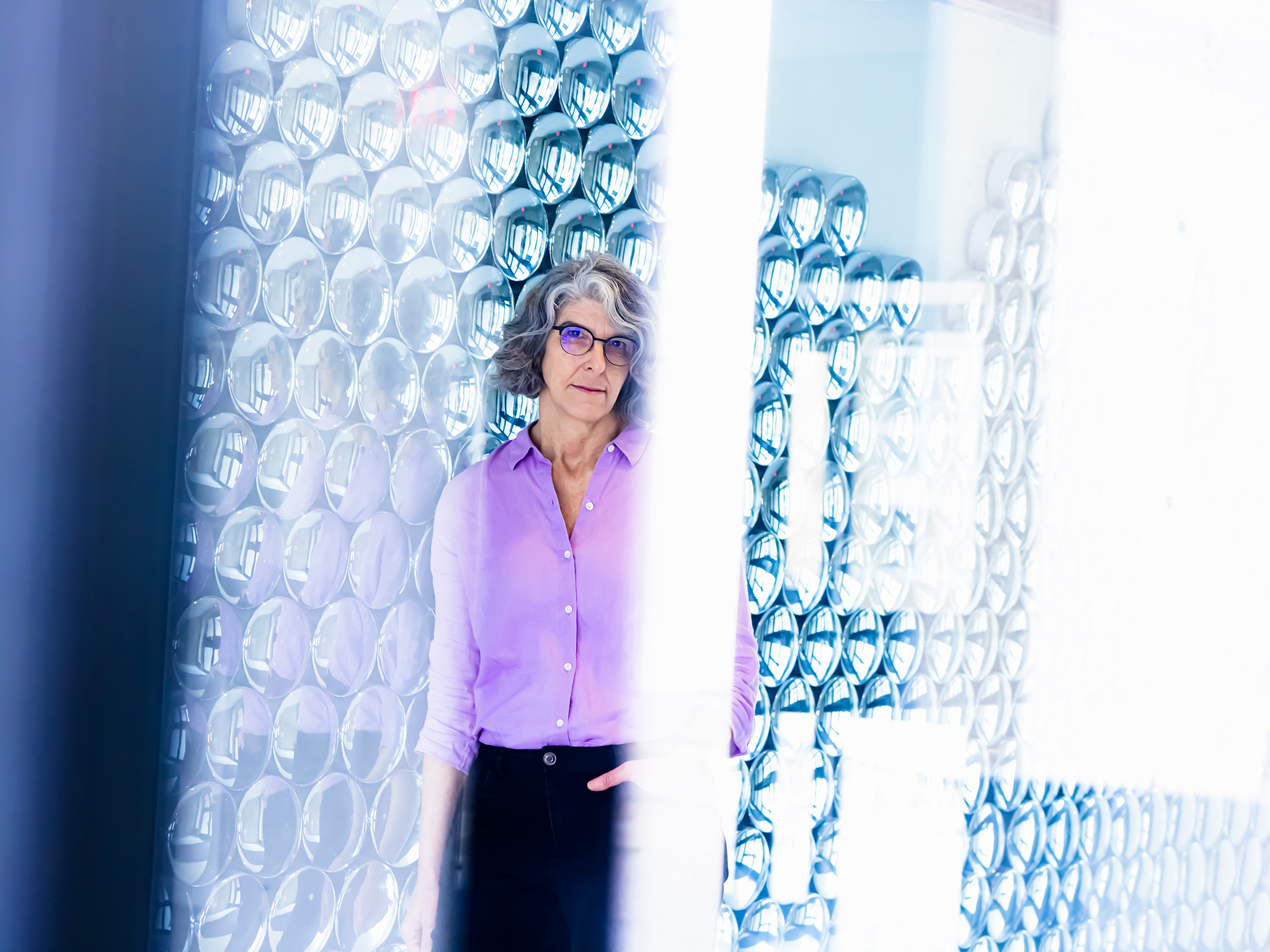View
Ghost Particles in the Machine
by Joanna Thompson
photography by Horst Herget
Researchers at York University are unravelling the mysteries of the universe, one subatomic particle at a time. At the Main Injector Experiment for v-A (MINERvA) – an international collaboration with Fermilab in Batavia, Illinois, as well as many other institutions – this means firing a beam of neutrinos at a host of different materials and seeing what happens.
Neutrinos are nicknamed “ghost particles” for their ability to pass through solid objects undetected. Trillions of neutrinos zip through your body every second, but since these tiny particles lack charge and have almost no mass, they very rarely interact with any of your atoms. Scientists can only detect them when they crash directly into another particle (or group of particles), changing its properties.
This weird ability would be akin to buying a scoop of chocolate ice cream and walking three blocks, only to find that your cone suddenly contained vanilla.
“They have to knock into a nucleus. And the nucleus is kind of a messy place,” says Deborah Harris, a professor of particle physics at York University and co-spokesperson for MINERvA.
By shooting a high-energy neutrino beam at various elements, the MINERvA experiment measured what gets produced when these tiny particles collide with different nuclei. But researchers realized that their neutrino beam could also help solve another particle physics conundrum – the radius of a proton. In a paper recently published in Nature, York University postdoctoral researcher Tejin Cai described this measurement, which was his thesis work at University of Rochester. The calculation isolated a bunch of antineutrinos interacting with hydrogen atoms in the detector by measuring the direction of the outgoing neutrons. Then, the analysis worked backward to infer the protons’ size. MINERvA found that protons have a radius of 0.73 femtometres – about 13 per cent smaller than, but still consistent with, what scientists previously measured using a beam of electrons. The fact that these two very different measurements gave consistent answers tells us something about how weak charges and electric charges are attached to the same building blocks of the proton.

In addition to the MINERvA experiment, Harris is lending her expertise to the upcoming Deep Underground Neutrino Experiment (DUNE), an experiment also hosted by Fermilab. The goal of DUNE is to shed light on one of the neutrino’s most mysterious properties: their ability to oscillate, or change “flavour” (type), as they travel. This weird ability would be akin to buying a scoop of chocolate ice cream and walking three blocks, only to find that your cone suddenly contained vanilla.
The DUNE project plans to shoot neutrinos some 1,300 kilometers underground and measure how much they oscillate after travelling that distance. This will help scientists develop an even better grasp of the physics underlying every quark, atom and galaxy. “The more we understand about neutrinos, the more we understand about the universe,” Harris says. ■